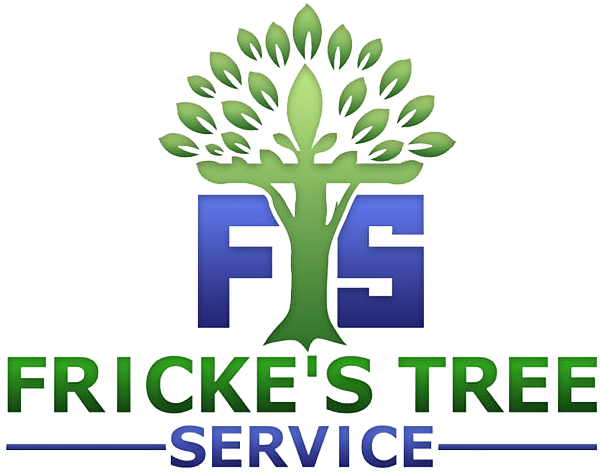Fricke's Tree Service
The Importance of Regular Tree Trimming for Tree Health
Regular tree trimming is an essential practice that significantly contributes to the overall health and longevity of trees. Many homeowners may overlook this vital task, but understanding its importance can lead to healthier, more vibrant trees that enhance the beauty of your landscape. In this post, we will explore the numerous benefits of regular tree trimming, the best practices to follow, and how it can prevent potential hazards in your yard. By the end of this article, you will have a comprehensive understanding of why tree trimming is not just a chore, but a crucial aspect of tree care that can yield long-term benefits for both your property and the environment.
Benefits of Regular Tree Trimming
Tree trimming offers a variety of benefits that go beyond mere aesthetics. Here are some key advantages:- Promotes Healthy Growth: Regular trimming encourages new growth by allowing sunlight to reach the inner branches and leaves. This process not only stimulates the tree's growth but also helps in developing a stronger structure.
- Improves Air Circulation: Thinning out dense foliage improves air circulation, reducing the risk of fungal infections and diseases that thrive in damp, shaded environments. Good air circulation is essential for the overall health of the tree.
- Enhances Aesthetic Appeal: Well-trimmed trees look more attractive and can increase your property’s curb appeal. A well-maintained landscape can significantly enhance the value of your home.
- Prevents Damage: Trimming dead or weak branches reduces the risk of them falling and causing damage during storms or high winds. This proactive approach can save you from costly repairs and potential injuries.
- Encourages Fruit Production: For fruit-bearing trees, regular trimming can lead to better fruit quality and yield. By removing excess branches, the tree can focus its energy on producing larger, healthier fruits.
Best Practices for Tree Trimming
To ensure effective tree trimming, it’s important to follow best practices. Here are some tips to keep in mind:- Know the Right Time: The best time to trim most trees is during late winter or early spring before new growth begins. This timing allows the tree to heal quickly and promotes vigorous growth in the upcoming season.
- Use Proper Tools: Invest in quality pruning shears, loppers, and saws to make clean cuts. Using the right tools not only makes the job easier but also minimizes damage to the tree.
- Follow the 1/3 Rule: Never remove more than one-third of a tree’s foliage in a single trimming session. This rule helps maintain the tree's health and ensures it can continue to photosynthesize effectively.
- Make Clean Cuts: Avoid tearing the bark by making clean cuts at a slight angle. Clean cuts heal faster and reduce the risk of disease entering the tree.
- Consider Professional Help: For large trees or complex trimming, hiring a certified arborist is advisable. Professionals have the expertise and equipment to handle the job safely and effectively.
Signs Your Trees Need Trimming
Recognizing when your trees need trimming is crucial for maintaining their health. Look for these signs:- Overgrown Branches: If branches are encroaching on power lines or structures, it’s time to trim. Overgrown branches can pose safety hazards and should be addressed promptly.
- Dead or Dying Branches: Remove any branches that are dead, diseased, or damaged. These branches can attract pests and diseases that may spread to healthy parts of the tree.
- Weak Structure: Trees with a weak structure may need trimming to prevent breakage. Assess the tree's overall shape and stability to determine if trimming is necessary.
- Excessive Foliage: If the tree is too dense, it may need thinning to improve light penetration. Thinning allows for better growth and health of the tree.
Tree Trimming and Safety
Tree trimming is not just about aesthetics; it also plays a crucial role in safety. Here’s how:- Reduces Hazards: Trimming dead branches prevents them from falling and causing injury or property damage. Regular maintenance can significantly reduce the risk of accidents.
- Improves Visibility: Keeping trees trimmed can enhance visibility for drivers and pedestrians. This is especially important for trees located near roadways or pathways.
- Prevents Pests: Regular trimming can help control pest populations that may thrive in dense foliage. By maintaining a healthy tree structure, you can deter pests and diseases.
Environmental Impact of Tree Trimming
Regular tree trimming also has positive effects on the environment. Here are some points to consider:- Supports Biodiversity: Healthy trees provide habitats for various wildlife species. By maintaining your trees, you contribute to the ecosystem and support local wildlife.
- Improves Air Quality: Well-maintained trees contribute to cleaner air by absorbing pollutants. Trees play a vital role in filtering the air we breathe.
- Enhances Carbon Sequestration: Healthy trees are more effective at absorbing carbon dioxide, helping combat climate change. By ensuring your trees are healthy, you are actively participating in environmental conservation.
Conclusion
In summary, regular tree trimming is a vital practice that promotes tree health, enhances safety, and contributes positively to the environment. By understanding the benefits and following best practices, you can ensure that your trees remain healthy and beautiful for years to come. Whether you choose to tackle the task yourself or hire a professional, prioritizing tree trimming will pay off in the long run. Remember, a well-maintained tree is not only a beautiful addition to your landscape but also a valuable asset to your property and the environment.SHARE POST
RECENT POSTS
Interested in Our Services?
Get in touch today to discuss your next project and we will happy to answer any questions and provide you with a no-obligation FREE Estimate.







